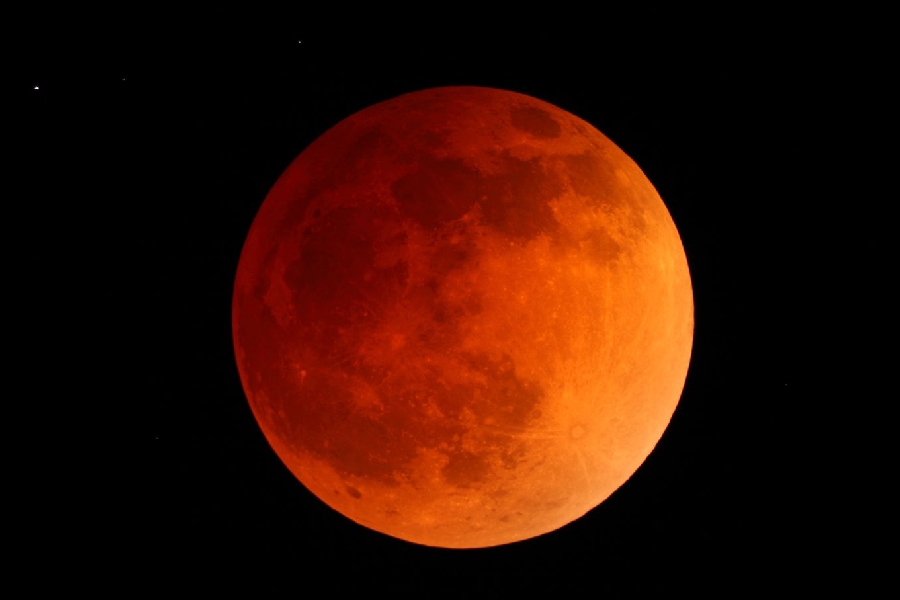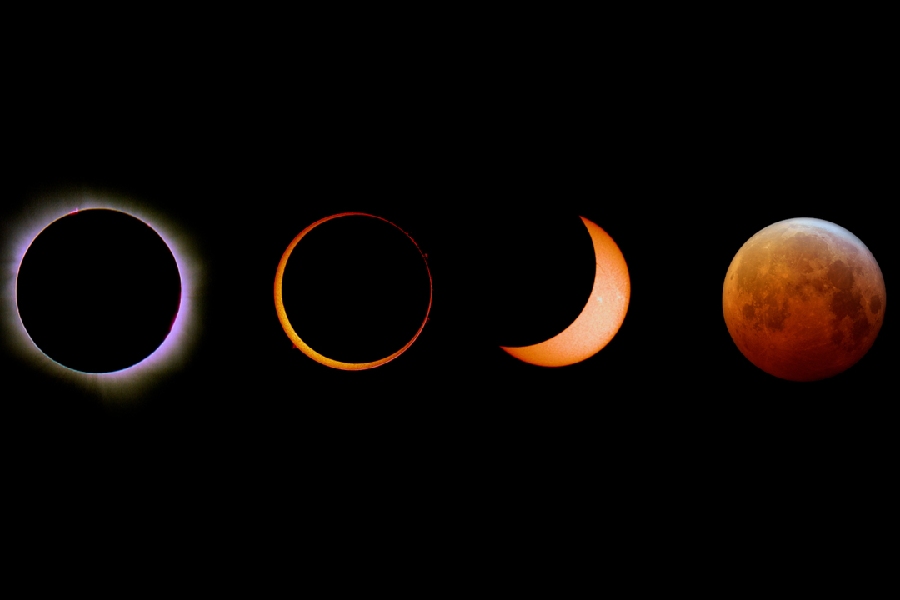During a lunar eclipse, our Moon shifts in appearance from its usual bright white glow to a mysterious, dim, reddish ball. But what causes this dramatic transformation to be visible sometimes to the naked eye? What is a lunar eclipse exactly?
A lunar eclipse offers a unique view into the intricate orbital dance of the Sun, Earth, and Moon. This article explains what causes this phenomenon that, as a result, leads to a classic blood moon scene.
We explore the cycles of eclipse reoccurrences, discuss how sunlight passes through our skies, and walk through astronomical details that dictate eclipse visibility for specific locations.
From ancient mythologies interpreting eclipses as omens to the concrete orbital physics governing their unfolding today, this will help you make sense of what a lunar eclipse truly is.
What Is a Lunar Eclipse?
What is a lunar eclipse? A lunar eclipse occurs when the Earth lines up directly between the Sun and the Moon, casting a shadow on the lunar surface. From Earth’s perspective, it looks like the Moon is darkening and turning reddish in color.
This happens because some sunlight still reaches the Moon after passing through Earth’s atmosphere, which filters out most colors except red. Lunar eclipses give us a chance to see the Moon take on dramatic coloring for a short period before it returns to its normal brightness.

Entering Earth’s Shadow – Umbra and Penumbra Regions
During a lunar eclipse, not all parts of Earth’s shadow darken the Moon equally. Just as shadows on Earth fade from dark centers to lighter edges, so too does our planet’s shadow projected onto the lunar surface. The key regions creating lunar eclipse phases are the umbra and penumbra.
The umbra constitutes the central, darkest part of Earth’s shadow, comprising the inner 75% of its total width. When the Moon passes completely within the umbral shadow, the result is a total lunar eclipse, often giving the Moon a dim red glow at maximum.
This occurs because some sunlight still reaches and refracts through Earth’s atmosphere to fall indirectly on the lunar surface.
In contrast, the penumbra makes up the outer portion of the shadow, where Earth only partially blocks direct sunlight from reaching the Moon. Penumbral phases happen when the Moon travels only through this lighter peripheral region around the main umbra.
The result is a subtle darkening on the Moon’s surface – not as dramatic as the vibrant reds of a total eclipse, but an intriguing sight nonetheless for moon gazers.
So, in review – the dark umbra equals total lunar eclipse, while the lighter penumbral areas generate more subtle partial eclipse effects. Both stem from the interplay of direct versus indirect sunlight hitting the Moon after passing through layers of Earth’s shadow.
The Moon’s Appearance During a Lunar Eclipse – A Cosmic Canvas Unveiled
Visual transformation
In the enchanting theater of a lunar eclipse, the moon undergoes a captivating metamorphosis, transforming from its familiar full brightness to a celestial canvas adorned with shades of red and brown.
Shift from full brightness
As the moon gracefully slides into Earth’s shadow, the initial act starts – the subtle dimming of its luminous glow.
The moon begins to lose luminosity bit by bit as areas shift into the lighter outer penumbra shadow, preceding the darker inner umbra shadow that will later fully envelop the moon during the total lunar eclipse phase.
Various shades of red and brown
As sunlight pierces our atmosphere to dimly illuminate the moon’s surface through Earth’s deep inner shadow, a visually arresting shift unfolds.
The lunar orb shifts from its usual stark white glow into a vivid copper color. This temporary blood moon metamorphosis comes from sunlight getting filtered red or brown by Earth’s atmosphere before dimly re-reflecting onto the Moon’s surface.
Atmospheric scattering
In this technical yet enchanting interlude, Earth’s atmosphere becomes the artist’s brush, scattering sunlight and transforming the moon’s appearance.
The shorter wavelengths of light, the blues and violets, are scattered away, leaving the longer wavelengths of reds and browns to paint the moon’s surface.

The Role of Lunar Eclipses in Astronomy – Illuminating Celestial Dynamics
Overview of scientific importance
In the grand tapestry of astronomy, lunar eclipses emerge as celestial laboratories, offering invaluable insights into the intricate dynamics of the Earth-Moon-Sun system. As astronomical researchers don their scientific lenses, they uncover a trove of knowledge embedded in the shadows and hues of a lunar eclipse.
Lunar eclipses are useful events for scientists to precisely measure the positions and interactions of celestial bodies like the Earth, Moon, and Sun. By understanding how Earth’s shadow falls on the Moon during an eclipse, astronomers gain insight into the complex orbital motions governing this celestial system.
Notable observations and experiments
Now, let’s delve into the scientific experiments and observations that unfold during the lunar eclipse saga.
Lunar limb darkening
During a lunar eclipse, the Earth’s shadow doesn’t uniformly cloak the moon. Astronomers keenly observe the lunar limb darkening phenomenon – a subtle gradient in the darkness at the moon’s edges. This phenomenon provides vital clues about the composition and properties of the Earth’s atmosphere.
Earth’s atmosphere as a lens
The Earth’s atmosphere acts as a cosmic lens during a lunar eclipse. Scientists conduct meticulous experiments to study this lensing effect, gaining a deeper understanding of atmospheric conditions and their impact on the bending of sunlight.
Temperature fluctuations
As the moon traverses through Earth’s shadow, scientists monitor temperature fluctuations on the lunar surface. These observations unveil valuable data about the thermal properties of the moon, aiding in refining models of lunar regolith and surface composition.
Refinement of orbital parameters
Lunar eclipses act as precision instruments for refining the orbital parameters of the Earth-Moon-Sun system. By measuring the exact timings and characteristics of lunar eclipses, astronomers enhance our understanding of the intricacies of celestial orbits.
Conclusion
A lunar eclipse offers more than striking visuals – it reveals profound insights into the intricate mechanics governing Earth’s relationship with the Moon and Sun.
As shadows play across the Moon’s face during an eclipse, transforming its coloration over time, scientists can decode the underlying celestial choreography. This enhances our understanding of the precise geometries and physics at play in this aligned Earth-Moon-Sun system.
What is a lunar eclipse, then, but a captivating chapter in the ongoing exploration of our cosmic home? We hope this astronomical journey has illuminated the celestial wonders above, deepening your understanding and appreciation of the cosmic dance that unfolds in the night sky.
As you gaze upon future lunar eclipses, may you find yourself not just witnessing an event but participating in the ongoing story of cosmic discovery.
